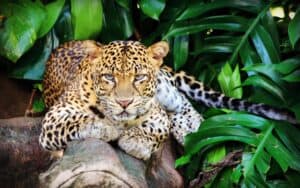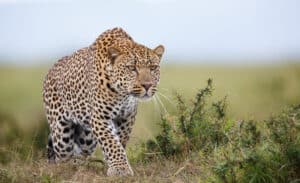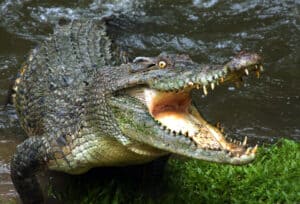It’s quite normal to watch videos of predators catching an animal and feel sorry for the prey. In this particular clip, however, we also feel sorry for the predator. It shows a leopard attacking a porcupine and getting a face full of quills for its efforts. Porcupines are not exactly easy to catch but leopards are one of the few animals that are willing to attempt it. It proves that some predators will take considerable risks to get a meal.
Watch the Action Now

©Protasov AN/Shutterstock.com
What Do Leopards Normally Eat?
Leopards are carnivores but are not that fussy about which species of animals they eat. Studies have shown that they are willing to consume more than 90 species of prey in sub-Saharan Africa. Their prey also varies by location. For example, in forests, they tend to target medium to large-sized prey which often includes primates. In Savannah regions, however, they tend to target larger prey.
Leopards living in different countries also have different diets. This means that leopards living in the rainforests of Africa feed on red river hogs, mandrills, and large rodents including the brush-tailed porcupine. However, leopards living in Iran feed on wild sheep, pigs, and goats. Leopards are also scavengers and will steal prey from other predators if they can. They are willing to consume carcasses that have started to putrefy.
Do Porcupine Quills Hurt Leopards?

Porcupines raise their quills in defense.
©Pavel Kovacs/Shutterstock.com
Porcupine quills are made from keratin. They are a highly effective defense characteristic and put off a lot of predators. When a porcupine feels threatened, they will turn their back towards the predator to be sure they get a face full of quills. Porcupine quills are sharp at the end and can pierce a leopard’s skin without too much trouble. Also, the quills break off and get stuck in the leopard’s flesh. This hurts! At the same time, it can also be dangerous. Wounds caused by porcupine quills can become infected and these infections can be so severe that they cause the death of the leopard.
This means that leopards have to balance the risk of this happening with the reward of getting a meal. The best strategy for a leopard is to take the porcupine by surprise and flip it onto its back exposing its unprotected belly. As we can see in this clip, that is not always easy to do!
The photo featured at the top of this post is © Sheri Lim/Shutterstock.com
Thank you for reading! Have some feedback for us? Contact the AZ Animals editorial team.







